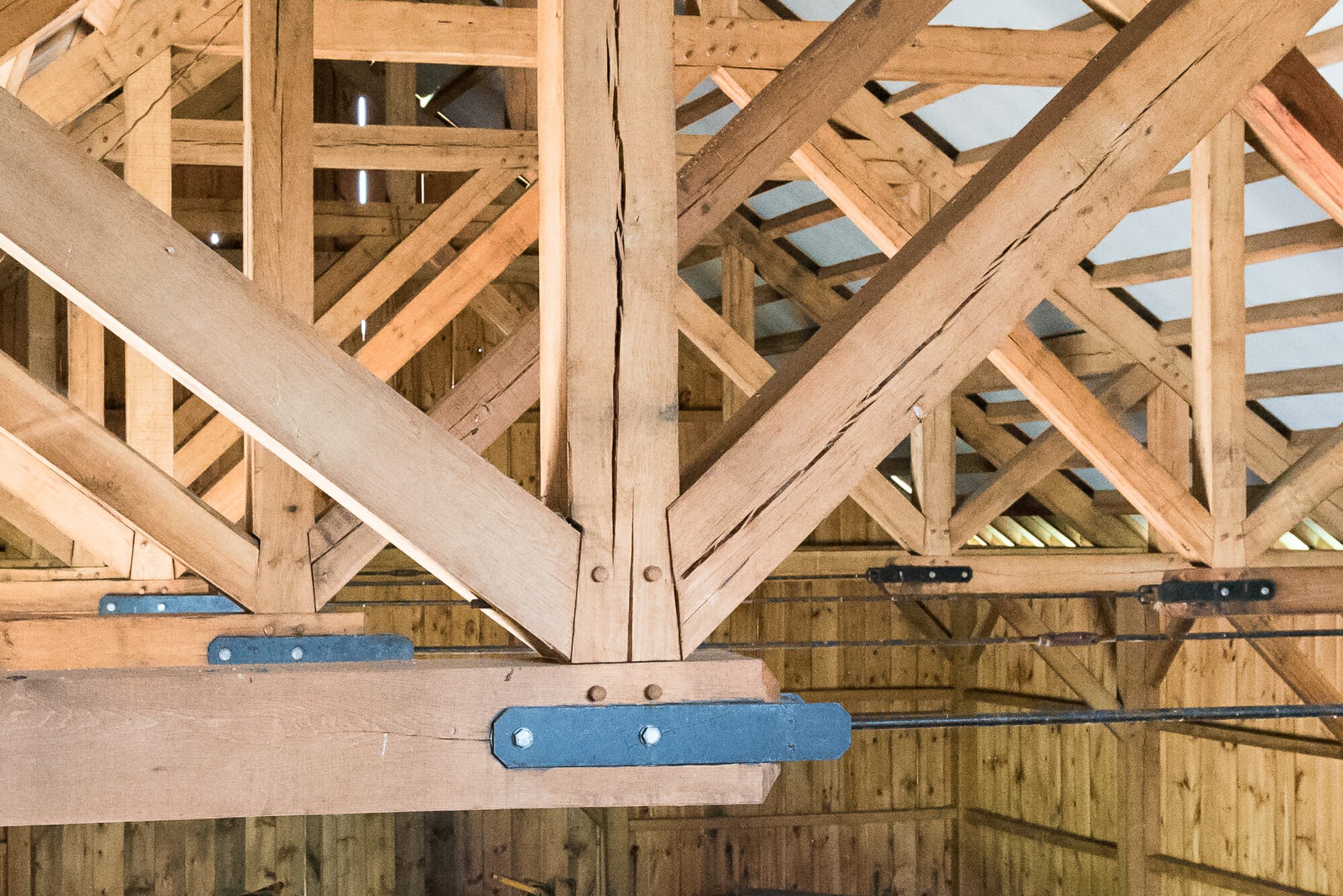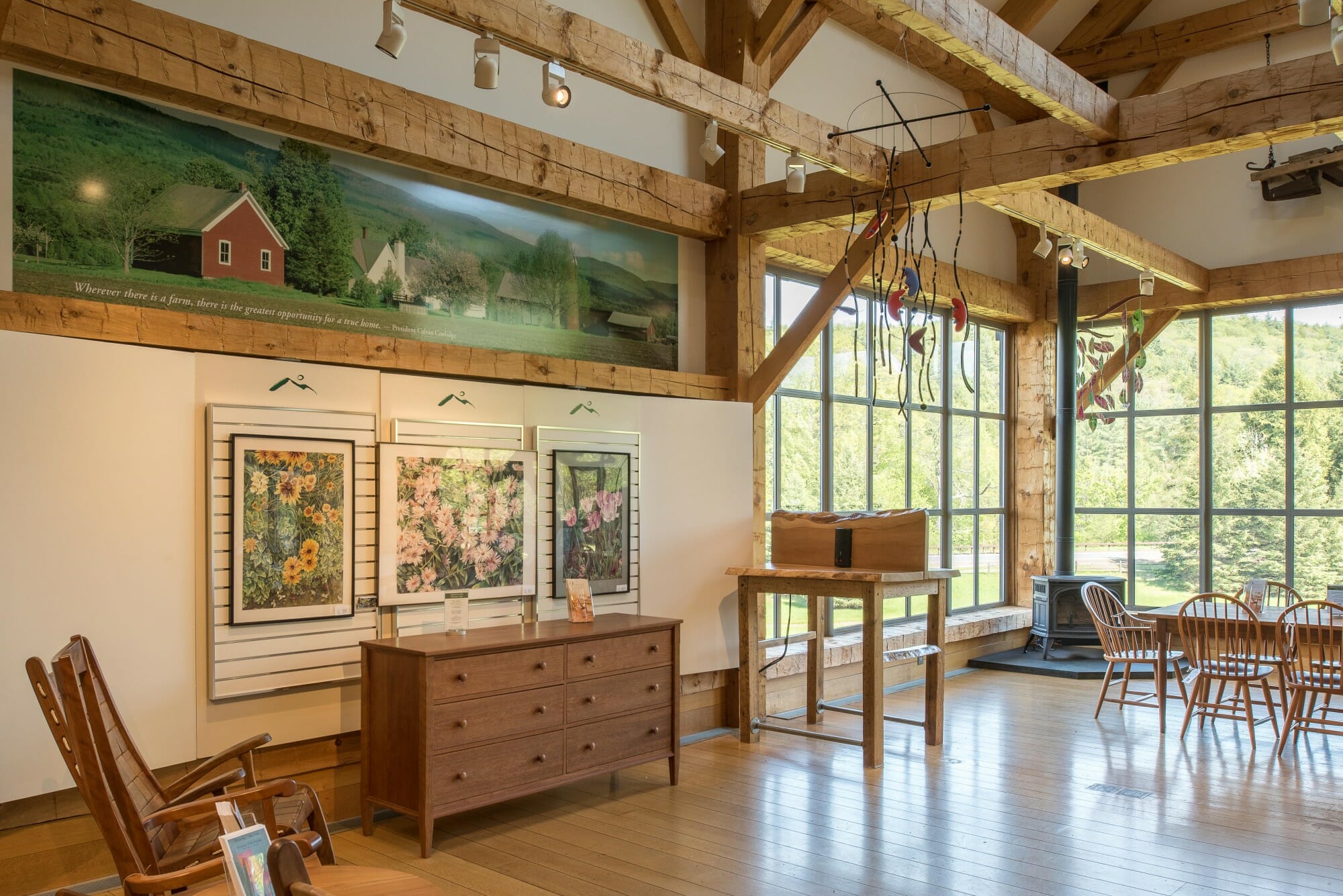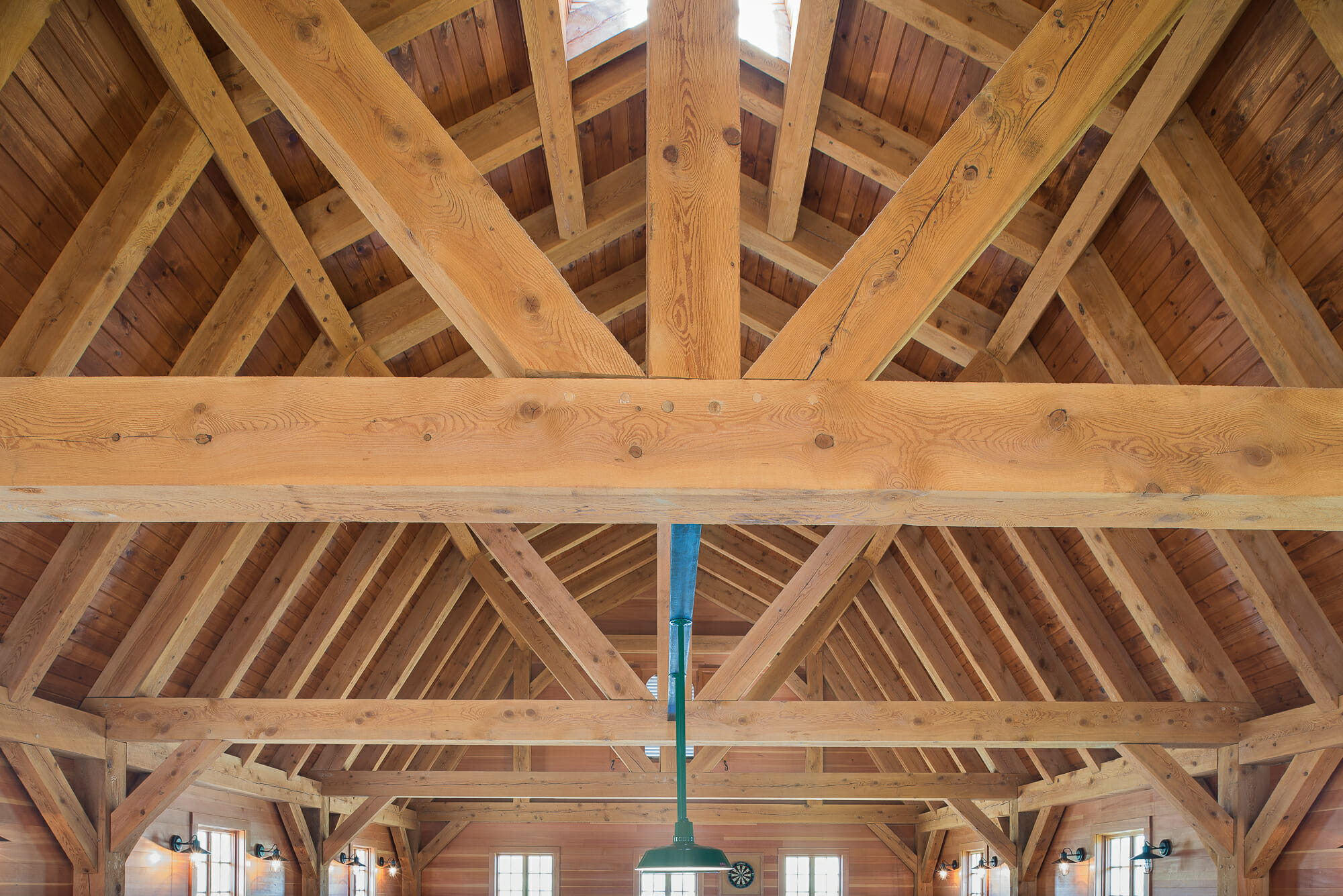Wood is a natural material prone to change and variation. Like people, no two trees are exactly the same, and no piece of wood from two individual trees will ever look perfectly identical. The nice thing about wood is that pieces of timber will always complement each other even if they don’t precisely match. Some clients without much experience working with wood struggle with the idea that wood is a material that can be shaped and stained, but that can’t be reproduced identically each time, like metal or plastic. Wood will always have some degree of natural variation that we can’t control. That’s one of the great things about wood: every piece of timber is unique! So everything you build with timber will be unique and specific to your structure.
Besides species, other characteristics that can make timbers look different are natural coloration and grain variation, density of the wood fibers, portion of the tree from which it was cut, all affecting how a piece of wood takes a stain.
Checking is another aspect of the natural variation of wood that can be unpredictable and hard to control. Checking can be greatly misunderstood by the wood novice. People see a crack in the wood and think, “It’s broken!” Most likely, the wood is not broken and the check in the wood is not compromising the structure’s stability or integrity in any way.
At Vermont Timber Works, we engineer our structures to accommodate the natural movements of the wood as it dries and ages, including checking and twisting. Sometimes it won’t do either, and sometimes, a year or so after construction, you’ll see checks developing in the wood as it dries and shrinks with age.
We know this is normal behavior for wood and it further individualizes your structure and your timber beams and trusses, providing that rustic antique look many people enjoy. For people who really don’t like the look of checking, or are still concerned about how checks affect the wood quality, there are species choices that are less prone to checking. You can also use “free of heart” timbers which are less prone to checking than heartwood. Some species like Oak for example, are very prone to checking and should be avoided if you don’t like that look.
You could also use weathered wood, which has been left out and has dried enough so the appearance won’t change much more over time. A similar route would be to use reclaimed wood which, having been used to build a barn or other structure a long time ago, would be very dry and its appearance wouldn’t change much more over the years. If you really can’t stand the thought of checking at all, then you can always opt for Glulam material instead, which will ensure that the beams and arches will look the way they did on the day they were installed.
In some cases, extreme checking can be a cause for concern, such as when the crack extends to the other side of the timber and becomes a split. Split timber is considered defective and if there’s a split in a beam or a post, it should definitely be inspected.
Do you have a question about Timber Checking or want to know more? Submit a question to our ask the expert’s page, or comment below!





Does Vermont timber works ever clad a glulam with reclaimed weather wood stock? The biggest problem would then be repairing any damage to knots? Dave G
Hi Dave,
Vermont Timber Works doesn’t do any cladding. That is generally site applied by our clients.
Thanks,
Caitlin
I have a new cedar, exterior beam installed for a gabeled roof at my patio. It has checking running horizontally along half of it, which then wraps around the end piece causing a “V” type split in the wood on the end. I don’t mind the checking but am concerned about the “V” type split/ crack on the end of the beam. My contractor states it’s “semi structural”. He suggested removing it and installing a micro lam beam in its place with a cedar wrap. The home is in TX and has full exposure to the sun. Not sure if the cedar wrap will fare as well as solid cedar or if the solid cedar beam remains that it’s integrity will not be further compromised. Wondering if it perhaps is defective where I should replace with another or if the microlam would be the way to proceed.
Hi Christina,
Sitting in Vermont, it is pretty hard to evaluate whether the beam can be structural or not. It depends on the load that the beam needs to carry and can best be answered by a local engineer who would visit your site and do a quick analysis. There is a good discussion on our web page regarding checking. https://www.vermonttimberworks.com/learn/wood-textures/shake-checking/ . Normal beam design and engineering accounts for checking, as long as it is indeed natural checking and not shake or splits, which are also discussed on our web page.
Best of luck on your project! Doug
I’m looking for information on the sound of beams checking, (Loud cracking at night, etc).